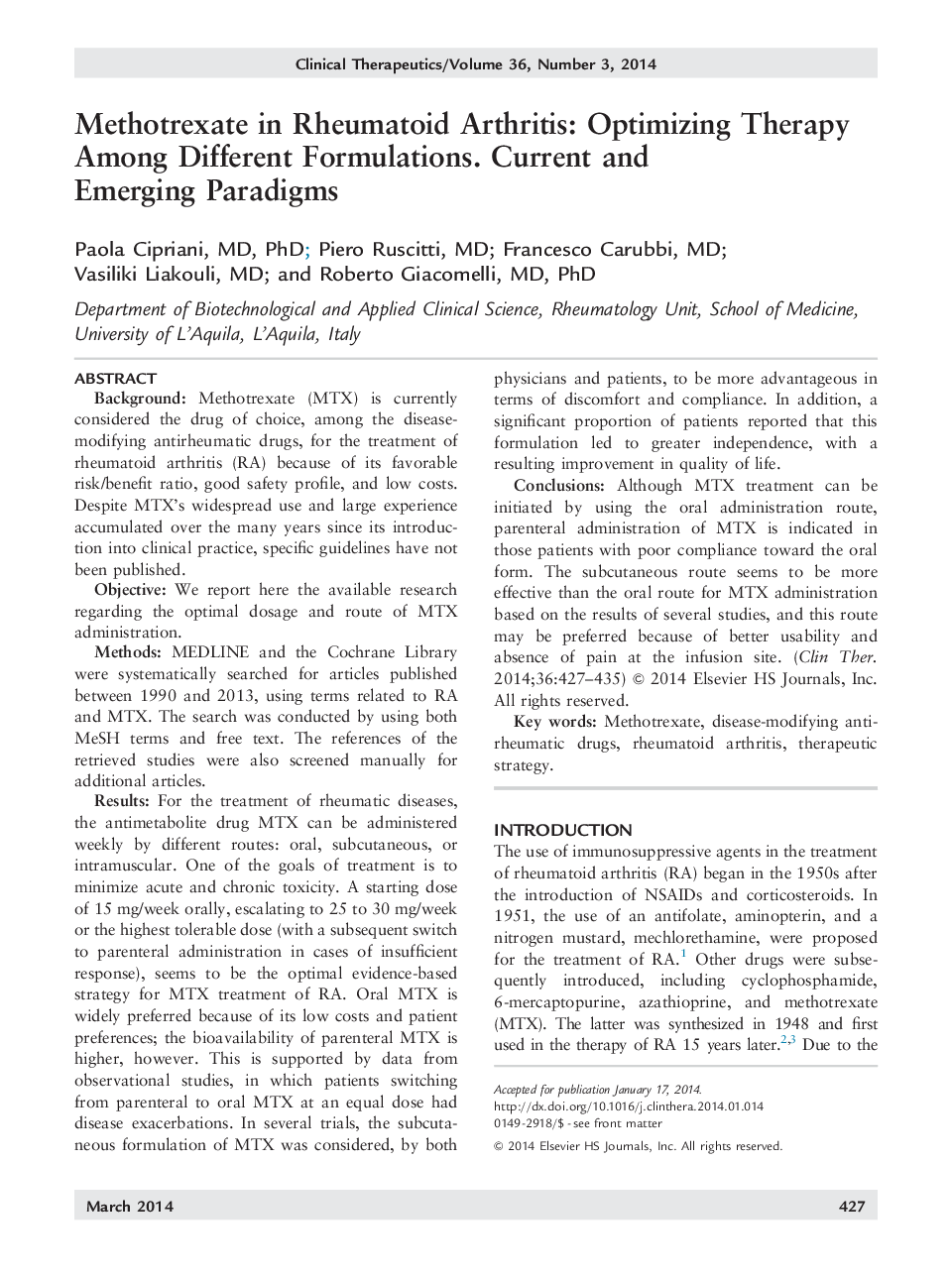| کد مقاله | کد نشریه | سال انتشار | مقاله انگلیسی | نسخه تمام متن |
|---|---|---|---|---|
| 5825362 | 1119895 | 2014 | 9 صفحه PDF | دانلود رایگان |
BackgroundMethotrexate (MTX) is currently considered the drug of choice, among the disease-modifying antirheumatic drugs, for the treatment of rheumatoid arthritis (RA) because of its favorable risk/benefit ratio, good safety profile, and low costs. Despite MTX's widespread use and large experience accumulated over the many years since its introduction into clinical practice, specific guidelines have not been published.ObjectiveWe report here the available research regarding the optimal dosage and route of MTX administration.MethodsMEDLINE and the Cochrane Library were systematically searched for articles published between 1990 and 2013, using terms related to RA and MTX. The search was conducted by using both MeSH terms and free text. The references of the retrieved studies were also screened manually for additional articles.ResultsFor the treatment of rheumatic diseases, the antimetabolite drug MTX can be administered weekly by different routes: oral, subcutaneous, or intramuscular. One of the goals of treatment is to minimize acute and chronic toxicity. A starting dose of 15 mg/week orally, escalating to 25 to 30 mg/week or the highest tolerable dose (with a subsequent switch to parenteral administration in cases of insufficient response), seems to be the optimal evidence-based strategy for MTX treatment of RA. Oral MTX is widely preferred because of its low costs and patient preferences; the bioavailability of parenteral MTX is higher, however. This is supported by data from observational studies, in which patients switching from parenteral to oral MTX at an equal dose had disease exacerbations. In several trials, the subcutaneous formulation of MTX was considered, by both physicians and patients, to be more advantageous in terms of discomfort and compliance. In addition, a significant proportion of patients reported that this formulation led to greater independence, with a resulting improvement in quality of life.ConclusionsAlthough MTX treatment can be initiated by using the oral administration route, parenteral administration of MTX is indicated in those patients with poor compliance toward the oral form. The subcutaneous route seems to be more effective than the oral route for MTX administration based on the results of several studies, and this route may be preferred because of better usability and absence of pain at the infusion site.
Journal: Clinical Therapeutics - Volume 36, Issue 3, 1 March 2014, Pages 427-435
